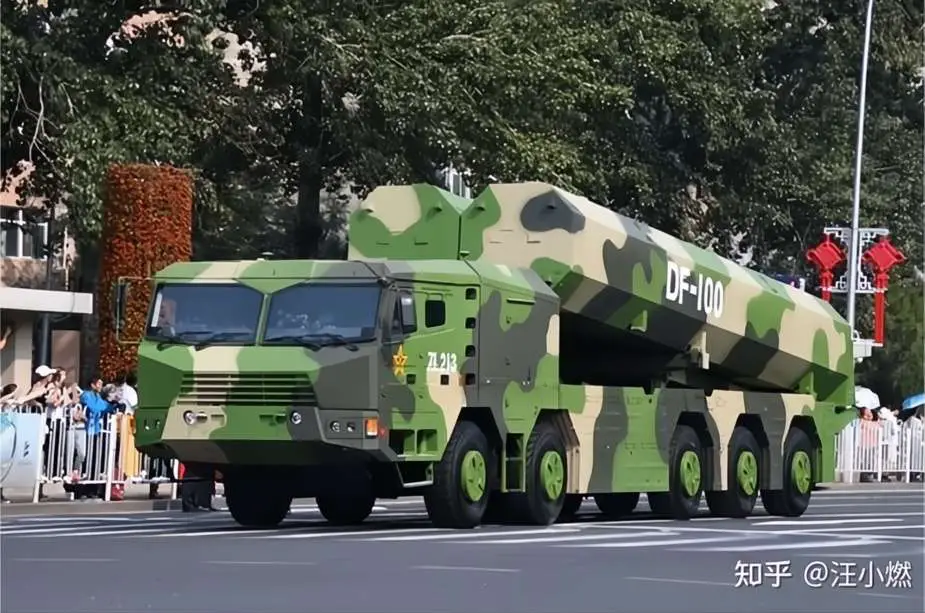Breaking news
China's DF-100 supersonic missiles threaten Taiwan's security.
As reported by the Taipei Times on October 15, 2023, in a recent report presented to the Legislative Yuan, the Taiwanese Ministry of National Defense issued a warning regarding the threat posed by China's DF-100 medium-range supersonic cruise missile to Taiwan's national security. During the ministry's budget report at the Legislative Yuan's Foreign Affairs and National Defense Committee, defense officials highlighted China's increased capabilities in rocket artillery systems, hypersonic ballistic missiles, and long-range supersonic cruise missiles. These advanced weapons are expected to play a role in supporting the People's Liberation Army's operations aimed at Taiwan.
Follow Army Recognition on Google News at this link

The DF-100, also known as Changjian 100, has an estimated range of over 2,500 km, or even more than 3,000 km according to some experts. (Picture source: Chinese social media)
One of the concerns outlined in the report is the medium-range supersonic cruise missile DF-100. Defense officials believe that China could use this missile to control the seas surrounding Taiwan, potentially affecting the access of its allies. Public sources indicate that this missile, derived from the older CJ-10 cruise missile, was unveiled during a military parade in Beijing in 2019.
According to a 2020 report from the US Air Force’s China Aerospace Studies Institute, DF-100 missiles have been deployed with the PLA Rocket Force’s 656th Brigade in China's Shandong Province. Assuming a minimum effective range of 2,000 km, this deployment poses a security concern to Taiwan, South Korea, Japan, and the northern regions of the Philippines. The report noted that the DF-100 was expected to reach full operational capacity later in the year.
In response to this perceived threat, Taiwan has procured PAC-3 Patriot missiles, while South Korea has deployed the Terminal High Altitude Area Defense (THAAD) system in Seongju County, North Gyeongsang Province. These systems are believed to have the capabilities to intercept the DF-100 missile, which is seen as a significant concern due to its technical specifications.
The DF-100, also known as Changjian 100, has a length of over 9 m and a projectile diameter ranging from 0.7 to 1 m. It can carry warheads weighing over 500 kg and is powered by a ramjet engine, enabling a maximum speed of Mach 4 (potentially Mach 5 in its terminal phase).
Although the exact range of the DF-100 remains undisclosed, it is expected to surpass that of the CJ-10, which has an estimated range of over 2,500 km, or even more than 3,000 km according to some experts. The DF-100's flight path takes it to altitudes above 30 km during the cruise phase, allowing it to avoid much of the dense atmosphere and penetrate enemy air defenses effectively.
Its guidance system offers various modes, including infrared imagery, satellite navigation, and inertia, which enhance its precision and accuracy. The DF-100 missile's flight characteristics make it unique with its dual-speed, dual-trajectory, three-stage design, setting it apart from conventional cruise missiles.
The DF-100 operates in a three-stage flight mode: the initial phase, or boost stage, employs a solid rocket motor booster for rapid ascent, reaching an altitude of around 30 km before discarding the booster.
The second stage, or cruise phase, involves high-trajectory level flight in near space at altitudes of 30 to 40 km. The missile reaches speeds of Mach 3 to 4 during this phase.
The third and final stage, or glide phase, consists of high-speed gliding flight. The DF-100's terminal speed of about Mach 5 allows it to reach a quasi-hypersonic speed, coupled with air rudders for maneuverability, enhancing its penetration capabilities and its ability to engage moving targets, making it a concern for air defense systems.
Information from Chinese media reports indicates that the DF-100 is utilized for various strategic purposes. It can effectively target high-value enemy installations, including airports, weapon depots, command centers, and transportation hubs. When equipped with guidance systems, the DF-100 is capable of engaging moving enemy surface ships. In addition, it plays a role in enhancing carrier anti-aircraft capabilities in coordination with other Chinese missile systems to increase pressure on enemy carrier battle groups, a threat specifically directed against the US Navy.


























